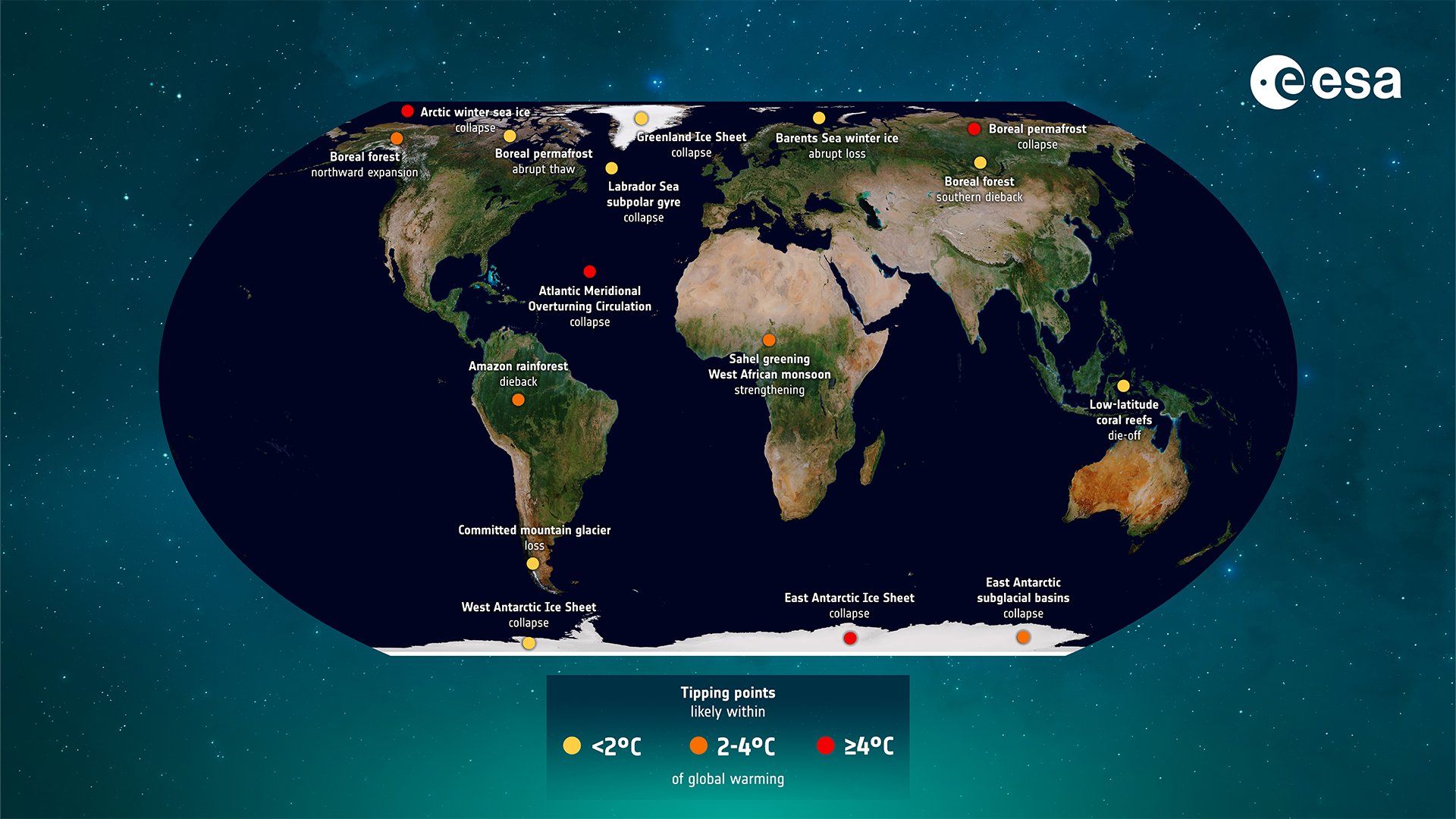Tipping points triggered by climate change pose a growing risk for societies. These critical transitions – which can occur at abruptly, and cause irreversible changes – will be challenging for society to adapt to, and worsen the risks from climate extremes.
In a paper published last week, researchers offer guidance on how remote sensing can help advance our understanding and detection of tipping systems, indicating how satellite data providers can maximise the usefulness of data in this research area.
Climate tipping points are elements of the Earth system in which small changes can kick off reinforcing loops that ‘tip’ a system from one stable state into a profoundly different state.
Several tipping point thresholds will be crossed when global warming exceeds 1.5°C, according to recent assessments. Current pledges under the Paris Agreement put us on track for 2.5–2.9°C temperature rise this century.
The paper led by Professor Tim Lenton, who is based at the University of Exeter, sets out a minimum set of criteria for applying remote sensing data to diverse tipping phenomena. These were defined at a workshop convened by ESA and held at the International Space Science Institute (ISSI) in Bern, Switzerland.

Tipping points - the evidence
To date, remote sensing has provided important evidence for tipping point science, for example on the accelerating loss of Antarctic Peninsula ice shelves and the Greenland and Antarctic ice sheets, and revealing the alternative stable states of boreal and tropical vegetation.
The satellite record spans about 50 years, insufficient to directly monitor slow-responding systems like the ice sheets or ocean overturning circulations. But the rapidly improving spatial and temporal coverage of satellites, and fine-scale resolution, offers underutilised opportunities for resilience sensing and tipping point early warning.
The researchers highlight how combining EO and models can improve predictions of, for example, abrupt droughts to avert food security crises, or abrupt loss of ecosystem function and services to inform regional policy-making and land-use planning.
“There is a clear benefit to society for improved information on potential tipping points,” says Professor Lenton. “At national-regional scales, climate tipping pose distinct adaptation challenges beyond those posed by climate change alone, and an improved understanding of their risk has already informed mitigation policy targets.”
Impacts could include stronger and more frequent extreme events, accelerated sea-level rise, and fundamental changes in climate variability.
“We need improved information on where and when tipping events could occur to guide stronger and more targeted adaptation policy. This can be aimed at reducing their impacts as well as people’s exposure and vulnerability,” says Professor Lenton.
For example, where biosphere tipping systems are within a national jurisdiction - for example boreal forest, Amazon rainforest, or tropical coral reefs - information derived from satellites could warn of an approaching tipping point to inform efforts to increase ecosystem resilience. These can be a challenge for regional policy and management, which again can benefit from improved risk assessment and resilience monitoring.
ESA has been collaborating with global research networks World Climate Research Programme (WCRP) and Future Earth’s AIMES project to host a workshop series to understand how remote sensing can help identify potential tipping points, improve resilience monitoring and early warning of tipping events. ESA will be supporting research into these priorities through research projects this year through its Climate Change Initiative programme.
Reference:
Lenton, T.M., Abrams, J.F., Bartsch, A. et al. Remotely sensing potential climate change tipping points across scales. Nat Commun 15, 343 (2024). https://doi.org/10.1038/s41467-023-44609-w

